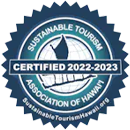Learning The Things To Do In Maui
What We Want You To Do On Maui
Our “Things To Do In Maui” list is a little different – as we are not advocating for or promoting locations and activities. We want you to go out there and experience all of the beauty Maui has to offer, while learning to “malama the aina” (care for the land). We want to help you do those things “pono” (in the right way). Our list of what to do in Maui is about being safe, having fun, respecting residents’ privacy, loving the aina (land), enriching the culture, learning the language and using local services, like listening to the local radio stations. It all helps you to get on “Maui time”, which, if we’re not mistaken, is what you came for… right?
As a visitor to Maui there is so much for you to learn, but most have a limited time in which to learn it. The majority of visitors are willing to invest some time researching where to go, but may not realize why they want to go, what they want to see or how they want see it. We hope to change that.
Following our “Things To Do In Maui” will make your vacation experience much more enjoyable. The residents will greatly appreciate it and you will soon be filled with aloha – given freely to you from those you meet along the way. That is what it’s like when you let Hawai’i happen!
The BEST Things To Do In Maui
Tourism impacts people’s lives, across the world – in both good and bad ways. We all want visitors to the island to have their very “best day on Maui” be an unforgettable trip to Hana. Visitors want to make each day on Maui better than the last. Residents want the same for themselves. Unfortunately, sometimes the goals of visitors collide with those of residents, creating conflict. And, after all is said and done, the interaction could end up ruining a potentially perfect day… for everyone.
The relationship between visitors and the residents is best when it’s based on mutual respect. A visitor needs to understand, that like the visitor’s own hometown, day-to-day life still must go on. Residents must tend to their families, work and community life, traveling the roads, using the stores and visiting the recreational areas too.
GET TIPS FOR THE ROAD TO HANA
We love that you want to visit and explore Hana. Please do it with Aloha. Check out the tips for traveling the road to Hana.
LEARN THE LANGUAGE
Correct pronunciation can go a long way to having better relations and to find out where you are going.
What To Do In Maui To Have A More Fulfilling Vacation
The Hawaiian culture is all about sharing. Sharing from ancient times through to recent history, they have shared to such an extent that they’ve given almost everything they had, including their lives. We all want Hawaiian culture to grow and thrive again. Simply feeling the aloha and expressing it shows respect for the culture, and helps it grow stronger. A resident shows respect to a visitor by sharing aloha and welcoming the visitor by returning a friendly wave. The honor system is alive and well at most fruit stands across East Maui due to the trust the residents have in the visitors.
A visitor can reciprocate this trust and kindness by learning about a few things that can make life better for the area’s residents. Simple things, like driving according to road conditions and pulling off to let resident drivers go ahead is always a kind gesture. No one wants to have to constantly deal with trespassers, (especially the intentional ones), or badly parked vehicles – and that applies to anywhere in the world. Think about your actions as if it was your backyard. How would you want visitors to act towards you and your property? Now you know what is pono. Simply treat others as you would like to be treated and aloha will rule the day.
Keep in mind that residents need to go places too. Please move off the road if you decide to slow down or stop for a photo op or any other purpose, including, (but not limited to): standing in the road while picture taking; while driving a lot slower just to take a longer look (AKA: being a “looky loo”) or attempting to park. Make sure you’re completely off the road no matter why you’re stopping. Getting run into – or worse, getting run over, on what was supposed to be your “best day on Maui”, can turn even the best vacation into your worst nightmare.
Please don’t ignore any road signs. They are there for a good reason and visitors are asked to follow them for their own safety and the safety of the residents.
Things You Should Remember To Do to Share Your Aloha
Driving & Residents
Driving can be frustrating, no matter where you’re from, but island driving has it’s own challenges. Most roads in Maui were built over 100 years ago, during the heyday of the sugarcane industry, from little more than dirt pathways. Constant upgrades (widening & lane additions) have developed over the years for the main arteries which have resulted in several multi lane highways. Resort areas have experienced improved traffic flow, but there are few alternate routes when traffic gets snarled.
Many rural and residential roads (especially the road to Hana) are narrow with utility poles and vegetation quite close to the road’s edges. Though this seems dangerous (and it can be), residents have been driving these roads for generations and know every twist and bend. When visiting most tourist areas in the world, it can seem like the residents are the crazy drivers, and if they’re frustrated with heavy rental car traffic while trying to get to work or home, that can certainly be the case, but they also know the road well and know where they’re headed, whereas tourists generally don’t. The main thing to keep in mind is to slow down and let resident drivers pass. Be sure to give yourself a little extra time and just enjoy the scenery!
Lei Etiquette
This symbol of island life is a wonderful tradition and the types and reasons a lei is given are as diverse as the flowers that grow everywhere here. A lei can symbolize love, friendship, accomplishment, respect and appreciation. They are also used to signify celebrations such as graduations, weddings, anniversaries, birthdays, Mother’s and Father’s Day and many other special occasions and holidays – especially the Lei Day holiday held every May 1st. May Day is Lei Day!< Just a couple things to keep in mind are: The word “lei” is never pronounced as a plural – as in “many lei were given” not “many lei’s”.
There are open and closed lei. A closed lei should be worn on the shoulders with half in front and half in back. If a lei has a ribbon it can be worn at the back of the neck or positioned on the right side if single or the left side if married. It is common for the giver of a lei to place the lei around the recipient’s neck along with a kiss.
Open lei are worn centered on the neck with the open ends hanging down in front. Any lei can be made open but it is considered bad luck to give a pregnant woman a closed lei – only open lei are appropriate. It is also bad luck to wear a lei you intend to give to someone else. Also never take off a lei in the presence of the person who gave it to you. Refrigerate your lei to make it last longer.
Coral Damage & Reef Safe Sunscreen
Recent research suggests there is ongoing coral bleaching happening all around Maui. Studies have found that harmful chemicals in commercial sunscreens may be contributing to this decline of our reef systems. Another reason reefs are becoming damaged is visitors walking on them. Not only can you become injured and incur nasty staph infections from walking on coral it also causes coral breakage which can take years for the reef to recover from.
Guide Books
Guidebooks are another part of the problem. In order to sell books these publications often offer “exclusive” information on “secret spots” to visit. This has drawn the ire of many residents who see visitors drawn to dangerous places often on private property. This puts the residents and the state at risk should something go wrong.
Many visitors research were to go and what to do well before they arrive on Maui. On sites like tripadvisor visitors speak of fantastic adventures they found through Google Maps not knowing that the time of year can be the difference between a lovely day hike and a harrowing flash flooded nightmare. Again locals speak of sharing warnings and posted “keep out” signage with visitors and hearing responses like “I’m on vacation and I don’t have to read anything”. With no recourse from these misinformed sites and books residents are beginning to call the police in for such trespassing.
Here is what a local Hana resident recently posted on Facebook:
They should lead the fight to remove “Maui Revealed” off the shelf. It should not be allowed to be sold. A book that says that you can ignore trespassing signs and that you can swim in ponds that you have to climb cliffs to get to is just making matters worse.
Your best bet to safely experience unique locations with respect to the local population is to go with a reputable guide or tour. Island people work hard. They have to. Many work two or even three jobs. The cost of living is high and as a world class destination the work has to be top notch. Some people who visit from other countries may assume tips are built into the price – they are not in Hawaii. Please make sure to tip well in Hawaii just as the residents do. We do this because we know it’s an important way to say we’re akamai (intelligent) of the ways of Aloha.
Things To Do To Be Culturally Respectful
There is much about the culture and locations that even the long time residents have no idea about. It’s purposely done that way to keep those areas sacred. Visitors may interpret a residents reaction with anger when they refuse to tell more about certain locations found in guide books or in an app. This is not done out of spite, it is to protect the site’s sacredness and in many cases these areas are often unsafe for visitors to try to access anyway.
We know visitors come here for the culture and the aloha – the welcoming nature of the people. Visitors enjoy seeing and learning about the traditional cultural practices, spending their hard earned money on many of the wonderful things to do in Maui, including: luaus, farm stands, local restaurants, tours, leis and flowers, local treats, museums and other representations of Hawaiian culture, including canoeing and surfing events. The residents should be given much mahalo (thanks) for the aloha provided. One of the best ways to show your appreciation is by choosing to do things in Maui that support the host culture and the people. It will make your next visit even better because you will have built a connection with the ways of the Hawaiian culture.
LEARN THE LANGUAGE!!
Help make the culture stronger by using the Hawaiian language while on-island. Get the basics down now, before you visit. Feel free to ask a resident to help you with pronunciation.
HELP KEEP AREAS SACRED
Many areas across Maui are sacred and in need of protection. We need your help. Please follow posted signs because they’re there for a reason. Should you see a sign saying “Kapu” (Keep Out!), please stay out. Don’t visit areas that are not marked with official signage. If there isn’t a sign, then you’re not meant to be going there. Unmarked spots are either privately owned or sacred – and meant to be left untouched.
Things To Do To In Maui To Support Local Businesses
For most residents, their livelihood depends on tourism in some form. It is the island’s primary industry and it’s a tough, competitive business. Oftentimes frustrations occur when the number of visitors needed to sustain the businesses is surpassed and too many visitors for the infrastructure to handle show up. There is a delicate balance and it must be maintained.
Don’t be shy about stopping at local businesses to find gifts, enjoy meals, treats and drinks along the road to Hana. These kinds of venues are a wonderful way to meet the residents. Have some fun and enjoy things like authentic Hawaiian shaved ice, coconut candy and banana bread. Taking a legal, professionally guided tour is also an important way to support local businesses as they give back to the community in many ways.
ATTEND LOCAL EVENTS
Town parties and events at the MACC are great ways to support the community.
Check out our posts of things to do in Maui during the Spring, Summer, Fall or Winter seasons.
SUPPORT THE LOCAL FRUIT & VEGETABLE GROWERS
Check out the many fruit stands and local farmers markets across the island, especially on the road to Hana.
DINE AT THE LOCAL PLACES
There is no need to stick to the usual chain restaurants or types of cuisine you normally eat at home. Live a little, (after all, you are on vacation) and you just might fall in love with some of our delicious, island-style culinary creations!
Check what’s available based on the holiday:
Easter, Mother’s Day, Father’s Day, Thanksgiving, Christmas, New Years, Valentine’s Day
LISTEN TO LOCAL RADIO
You will love what they have to say on KPOA 93.5 FM & KLHI 92.5 FM.
Things To Do In Maui To “Malama” The Environment
Give Back – Hawaiians Gave Everything (you’re turn)
The idea of “malama” (caring for) the environment, by keeping the sensitive areas protected for future generations, is important for all residents – and for visitors too. It’s no accident that large parts of Maui are legally protected and have become National, State or County Parks, nature conservancies and conservation zones. Residents understand the importance of caring for the environment and actively support and often participate in these efforts.
A visitor may not realize all of the hard work that goes into managing the land. Local organizations and government agencies work non-stop to reduce the spread of invasive species, mitigate against landslides and improve the land for endangered species. It takes hard work to constantly hold back the rainforest from taking over everything.
Across Hawai’i there are laws to reduce pollution and non-reusable materials by the average person. The visitor has a lot of impact and can carry more influence than a resident. Many times all it takes to make a positive change is being aware of what you buy and do. Changes in Maui are often based simply on how a visitor spends their time and money. Reducing trash, recycling and utilizing “certified eco-friendly tour operators” that are actively reducing their impact on the environment are some of the easiest ways to “kokua” (help) the environment.
VOLUNTEER
There are many volunteer and nonprofit organizations who are giving their aloha to restoring not just the environment but the the ancient ways and understandings of Hawai’i. Exciting and fulfilling adventures await for those wishing to give back to the land, sea, and people of Hawai’i while on vacation by volunteering to “malama” (care for) this beautiful place.
USE REEF SAFE SUNSCREEN WHEREVER YOU GO
We know you LOVE our reefs. We do too, which is why we need you to help us protect them. Some chemicals found in sunscreen, even in miniscule amounts, have been shown to bleach coral, which causes the reef to die at an alarming rate. You can help save the reef by making sure you’re using “Reef Safe” sunscreens.
BE ECO FRIENDLY
Hawaii’s plants and animals have experienced one of the highest rates of extinction on earth. On top of this, the sheer number of visitors (2016 recorded a record of almost 9 million visitor arrivals) has put a strain on many resources. Please help by choosing eco-friendly options as often as possible while visiting our islands. Mahalo!
USE CERTIFIED TOUR OPERATORS
Local, “certified tour operators” are professional guides who have been trained and know where to go and how to visit safely, without causing damage to the environment or other problems.
Ku‘ia Kahele Aka Na’au Ha‘aha’a
A HUMBLE PERSON WALKS CAREFULLY, SO AS NOT TO HURT OTHERS…” – Hawaiian Proverb
Things To Do On Maui To Be Safer
Residents will always look out for the best interests of their neighbors and the larger community. In many cases those interests are wide ranging and varied including public safety, maintaining recreation spots, finances… and in most cases it comes back to community investments. If the county/state ends up spending a lot of money rescuing visitors from places they shouldn’t go, that money isn’t well spent and other priorities will go unfunded. Instead, the community really wants to spend the money to improve the parks, trails and areas where the visiting public is more than welcome to visit, in a safe, peaceful and fun environment.
Too often visitors are sold on the idea of experiencing picture perfect or off-the-beaten-path locations, inaccessible to the general visiting public. Attempts to reach these publicly inaccessible areas often result in serious injuries that require the visitor to be rescued, sometimes successfully and sometimes not. There are signs like “Kapu”, “No Trespassing” or “No Parking” posted to inform visitors. When they’re ignored everyone loses. The community atmosphere of a traditional Hawaiian village disappears as gates and barriers go up to keep people out. Areas can be closed for a variety of safety or cultural reasons. When the posted warnings are ignored, it leads to friction.
Residents of Hawai’i truly want visitors to be safe, enjoy their time here and eventually return home to “talk story” about their “trip-of-a-lifetime” memories of Hawai’i, and most importantly, pass along their fundamental spiritual concept of “aloha”.
Dangers of Visiting Hawai’i
Scaring off tourists isn’t something anybody wants to happen in Hawai’i, or any tourist destination. However, the truth is that more people die visiting Hawai’i than any other state with beach destinations in the nation. Most fatal injuries involve visitors engaged in common activities such as swimming, snorkeling, hiking and driving. Many more suffer serious injuries, including spinal cord damage, from things like cliff jumping and large ocean waves. Honolulu’s Civil Beat and Huffington Post reported in 2016 that the rate of drowning deaths per visitor in Hawai’i is 5.7 per 1 million. Compare that to the state of Florida (next highest), which has a rate of 0.9 per 1 million. Hawaii’s average is nearly one drowning death per week.
While vacationers sometimes make bad decisions like mixing alcohol with water sports, others seem dangerously unaware of the risks. It seems there is an unspoken Hawai’i vacation mentality exhibited by visitors. The “I can do anything I want here because I’m in paradise” or “I paid a lot of money to be here so I can do as I please” mentality is a dangerous one. It is this type of thinking that leads people to take uncalculated risks that they never would consider trying if at home.
It can be difficult to learn everything there is to know about the Hawaiian culture or the etiquette of driving Hana Highway. Some things are logical and some may seem tedious – like driving slower than you’re used too or yielding on one lane bridges. One of the quickest and most enjoyable ways to learn how to navigate the Hana Highway is by taking a guided tour. They will drive it safely, while making sure you don’t miss a thing. A local guide is invaluable. Not just for learning about navigating the road but also for an accurate, detailed portrayal of the people and customs of Maui.
HIKING UPCOUNTRY
There are many opportunities to hike into incredible locations and still stay on the public trails.
HIKING MAUI’S EAST SIDE
Go hiking on Maui’s backside without having to cross private property.
EXPLORE HALEAKALA NATIONAL PARK
There are many miles of trails throughout Maui’s National Park system including the Summit, inside the Haleakala crater (overnight only), Kaupo and Kipahulu (Pools of Oheo) sections of the park.
EXPLORE THE BEAUTY OF MAUI ON IT’S ANCIENT TRAILS
Explore what Maui has to offer by using these paths.
PLEASE DON’T RUSH
Please relax and get on Maui time. There is no need to rush or always be first. You came here to get away from the rat race, right?
Community Feedback
The community of Hana has also launched organizations and Facebook pages listing problems and hazards residents see and experience every day along the road to Hana. Here are a few of their FaceBook comments:
- “Every inch of the Hana Highway is dangerous. I’ve warned so many tourists who were about to do STUPID STUFF.”
- “Local folks usually know how to respect these forces of nature we are surrounded by…try to help folks that are not aware of this danger…”
- “It is unfortunate that the Hana Highway is one of “THE” most popular travelled, possibly in the entire state, and yet the least maintained. The traffic signs are covered by overgrowth or drooping branches, top-heavy trees hang off the side of the mountain, vision is obstructed to oncoming traffic by overgrowth around blind turns, etc. The daily travel of local residents’ safety is dependent on the current conditions of the road.”
- “Remember the young man on Oahu who stood over the blowhole and was killed even when there was a sign posted and people warning him not to? The state can’t put signs on ever part of the island where there might be a risk, or we would be littered in them. Common sense folks!”
- “This road is for all who live on the Eastside – we depend on it. Our lives are constantly at risk at every turn. There’s heavy usage and maintaining it is showing us how dangerous it is..”
- “That’s the problem – they (visitors) don’t read warning signs! I had someone do something ‘no-no’ here and when I pointed out the sign the guy said “I’m on vacation and I don’t have to read a damned thing!”. Small wonder that they get into trouble!”
The Most Important Thing You Can Do In Maui Is Learn The Language
Hawaiian Language Basics
The Hawaiian language has a beautiful and flowing feel in it’s phonics when you begin to examine it closely. With only 12 letters it can be easy to grasp once you get the hang of it. The vowel pronunciations are the key to speaking Hawaiian words properly.
a – ah, as in father: aloha
e – a, as in may: nene
i – ee, as in bee: honi
o – oh, as in so: mahalo
u – oo, as in spoon: kapu
Hawai’i is the only state in the U.S. to have three official languages, Hawaiian, English and Pidgin English which is an island slang combining words from multiple cultures and aspects of island life. A little more on Pidgin later. For now let’s take a look at the meaning of Hawaii’s most well known word…
Aloha – Used as hello and goodby. Also to express love and affection. See above for the larger meaning.
Mahalo – Means thank you. Use this often and in conjunction with other words such as “mahalo for your Aloha”.
Ono – Means delicious. Also this word is given to a fairly large and delicious sport fish (ono) known elsewhere in the world as the wahoo.
Makai – Means ocean or towards the ocean. Often used to give directions.
Mauka – Means mountains or towards the mountains. Also used mostly for driving directions.
Aina – Means “land” . It’s a very heartfelt word to Hawaiians. This is a sacred word as the Hawaiians are the only polynesians whose creation story is derived from the land rather than the sea.
Malama – Means to care for or give of one’s time in service. It is common to use this word in combination such as “malama the aina” (caring for the land)
Akamai – Smart, clever, intelligent, wise.
Kapu – Today means “stay out” or “no trespassing”. In ancient times it meant “obey or die”. If you see this as a posted sign it means the place or thing has a strong warning to it with consequences.
Pau Hana – Finished, done
Kumaiina – Means resident, person living in the islands.
Kane – Male
Wahine – Female
Keiki – Child or children
Nui Loa – The term “nui loa” (very much) can be added on the end of words and phrases to give more emphasis such as “Aloha nui loa” or “Mahalo nui loa”.
Pono – Refers to the a Hawaiian healing ritual of Ho’oponono were apologies and forgiveness are given thus making things “right” with all involved.
Kokua – Means to help
The Meaning & Law Of Aloha
How important is the word “aloha” to the Hawaiian people? It is best explained by the actual “Law of Aloha” which is a real law on the books in Hawai’i.
Hawaii Revised Statutes Section 5-7.5 states:
“Aloha Spirit“. (a) “Aloha Spirit” is the coordination of mind and heart within each person. It brings each person to the self. Each person must think and emote good feelings to others. In the contemplation and presence of the life force, “Aloha”, the following unuhi laula loa may be used:’
“Akahai“, meaning kindness to be expressed with tenderness;
“Lōkahi“, meaning unity, to be expressed with harmony;
“ʻOluʻolu” meaning agreeable, to be expressed with pleasantness;
“Haʻahaʻa“, meaning humility, to be expressed with modesty;
“Ahonui“, meaning patience, to be expressed with perseverance.
These are traits of character that express the charm, warmth and sincerity of Hawaii’s people. It was the working philosophy of native Hawaiians and was presented as a gift to the people of Hawaiʻi. ”Aloha” is more than a word of greeting or farewell or a salutation. ”Aloha” means mutual regard and affection and extends warmth and caring with no obligation in return. “Aloha” is the essence of relationships in which each person is important to every other person for collective existence. ”Aloha” means to hear what is not said, to see what cannot be seen and to know the unknowable.
(b) In exercising their power on behalf of the people and in fulfillment of their responsibilities, obligations and service to the people, the legislature, governor, lieutenant governor, executive officers of each department, the chief justice, associate justices, and judges of the appellate, circuit, and district courts may contemplate and reside with the life force and give consideration to the “Aloha Spirit“.
Respect is Aloha. Humility, patience, pleasantness, kindness – all these things are important to the ohana and the culture.
When you hear someone speak of ‘showing their “aloha”’ to someone, just remember, to them this means showing the highest respect a person can have for another, themselves and the world. Giving you’re “aloha” (see above) will get you farther than anything else you do on vacation in Maui. Connecting with the culture here and embracing the “Aloha Spirit” can be life changing and can bring healing and relief to your life – even after returning home. Learn and practice the “Spirit of Aloha” and you will have the ultimate souvenir of your travels – a larger perspective.
Mahalo for visiting our humble post about island life in Hawai’i. We hope you learned something new about this beautiful and heartfelt culture. This is the goal of every one of our tours – to share the beauty of the land and sea while sharing our Aloha with visitors about the etiquette and lifestyle of Maui’s native culture.
Aloha Nui Loa!











